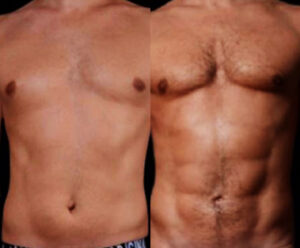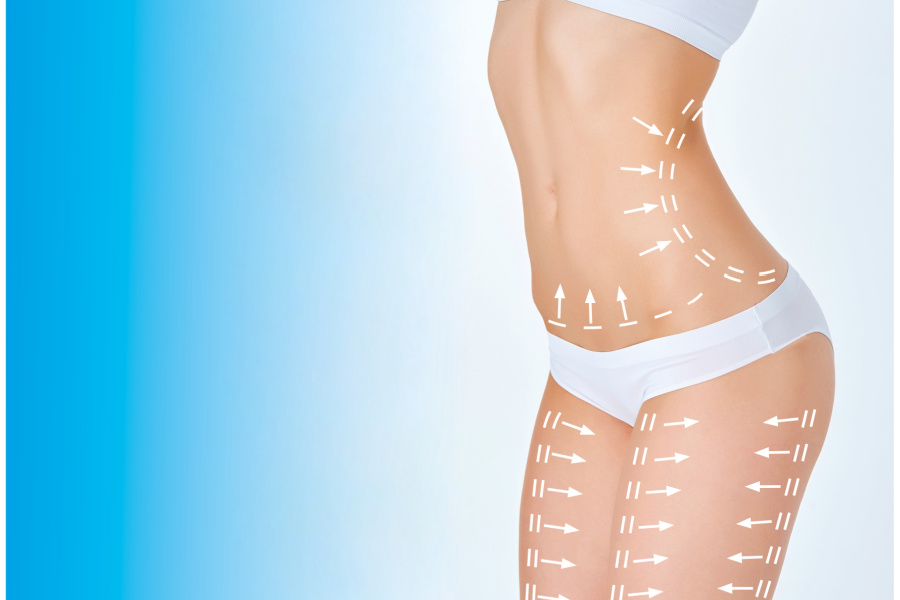Microneedling Recovery & Aftercare with Dr Fasano Congratulations on taking the step toward healthier, rejuvenated skin! Following your microneedling treatment, proper aftercare is essential to...
Vaser liposuction is a highly effective treatment for removing stubborn fat from areas such as the abdomen, thighs, and flanks. For many people, it’s the procedure that finally helps them achieve the sculpted shape they’ve always wanted — especially when other fat-reduction methods haven’t delivered the desired results.
Compared with traditional liposuction, Vaser stands out for its precision and ability to target fat cells while being gentler on surrounding tissues. But one common concern patients have before surgery is: Will Vaser lipo leave scars?
The short answer: scarring is minimal. While any procedure involving incisions technically qualifies as “invasive,” Vaser liposuction is considered minimally invasive. The incisions made are very small — just large enough for the cannula to pass through — which means the resulting scars are usually tiny and fade significantly over time.

In rare cases, some individuals may develop more noticeable scarring such as hypertrophic or keloid scars, but this is uncommon and largely depends on your skin type and healing process. For the vast majority of patients, scars are discreet and hardly visible once fully healed.
That said, good scar care is key to ensuring your incisions heal as flat, smooth, and faded as possible. Proper aftercare in the weeks and months following surgery will help minimise any lasting marks.
Before we share some scar management tips, let’s take a step back and answer an important question: what exactly are scars?
Why Do Scars Form in the First Place?
One of the few considerations with Vaser liposuction is the possibility of minimal scarring. But the truth is, scarring can happen any time the skin is cut, punctured, or incised — whether from surgery, an accident, or even something as small as a scratch.
Scars are essentially your body’s natural way of repairing itself. When your skin is injured, your body recognizes the wound and immediately begins the healing process. To do this, it sends collagen — a key protein that makes up much of your connective tissue — to the site of the injury.
Collagen works quickly to “patch up” the incision and close the wound. While this rapid repair is effective, the new tissue doesn’t look or behave exactly like the surrounding skin. Scar tissue often appears raised or discolored, and it tends to be tighter and less flexible than normal skin. This is why scars can stand out, even after the wound has fully healed.
The good news? With modern techniques like Vaser liposuction, the incisions are so small that resulting scars are typically tiny, faint, and easy to conceal once healed.
Are Vaser Liposuction Scars Noticeable?

In most cases, no — Vaser liposuction scars are barely noticeable. This is because the incisions made during the procedure are extremely small, just large enough to allow the cannula (a thin, tube-like instrument) to pass through. Since most cannulas measure only a few millimeters in diameter, the resulting scars are typically just as small.
These tiny incisions don’t create deep or wide scars, and once healed, they usually fade into the surrounding skin. For many patients, they’re virtually invisible.
On top of that, modern scar management techniques — such as silicone gels, laser therapy, or microneedling — can further reduce the appearance of even small scars. Compared with surgeries that require longer incisions, like tummy tucks or certain abdominal and knee procedures, Vaser liposuction leaves only the most minimal marks.
Even in cases where scars are slightly visible at first, they naturally fade over time and can be treated to blend in smoothly with the rest of your skin.
How to Reduce Scarring After Vaser Liposuction
While Vaser liposuction scars are usually very small and fade well over time, the right aftercare can make them heal even better. Here are some effective ways to minimize their appearance:
1 – Focus on Rest and Recovery
Healing begins with giving your body the time it needs. After surgery, take a few days to rest so your incisions can close properly. Mild swelling, bruising, and discomfort are normal. To support recovery:
-
Limit physical activity aside from gentle walks.
-
Wear your compression garment as directed.
-
Stay hydrated and eat a balanced, protein-rich diet.
-
Prioritize good sleep to help your body repair itself.

2 – Protect Scars from the Sun
Scar tissue is more sensitive to UV rays and can darken permanently when exposed to sunlight. To prevent this:
-
Avoid direct sun during recovery.
-
Apply a broad-spectrum, high-SPF sunscreen if you go outside.
-
Reapply sunscreen regularly.
-
Avoid tanning beds completely.
3 – Use Silicone Treatments
Silicone gels and sheets are among the most effective at-home scar care options. With consistent use, they can flatten raised scars, improve texture, and reduce discoloration.
4 – Explore Professional Scar Treatments if Needed
Some people are more prone to noticeable scarring, such as keloid or hypertrophic scars. If you’re concerned about how your incisions are healing, professional treatments — like laser therapy, microneedling, or steroid injections — may help smooth and fade scar tissue.
Vaser Liposuction Scar FAQs
How long does it take for Vaser lipo scars to fade?
Scar healing varies from person to person. Some people are naturally more prone to noticeable scars, while others heal with very faint marks. The number of incisions also matters — more extensive liposuction generally means more small scars.
In most cases, Vaser lipo scars gradually fade over time. It typically takes around six months to a year for scars to soften, lighten, and blend in with surrounding skin.
Does Vaser liposuction cause more scarring than SmartLipo?
No. Both Vaser and SmartLipo require only very small incisions, usually just a few millimeters in size. For most patients, the scars from each procedure are minimal and comparable in appearance.
What helps soften scar tissue after liposuction?
Scars will usually soften naturally with time, but you can speed up the process with proper care. One of the most effective options is silicone therapy — using silicone gel sheets or silicone-based creams to keep scars hydrated. This helps flatten raised tissue, improve flexibility, and reduce discoloration.



